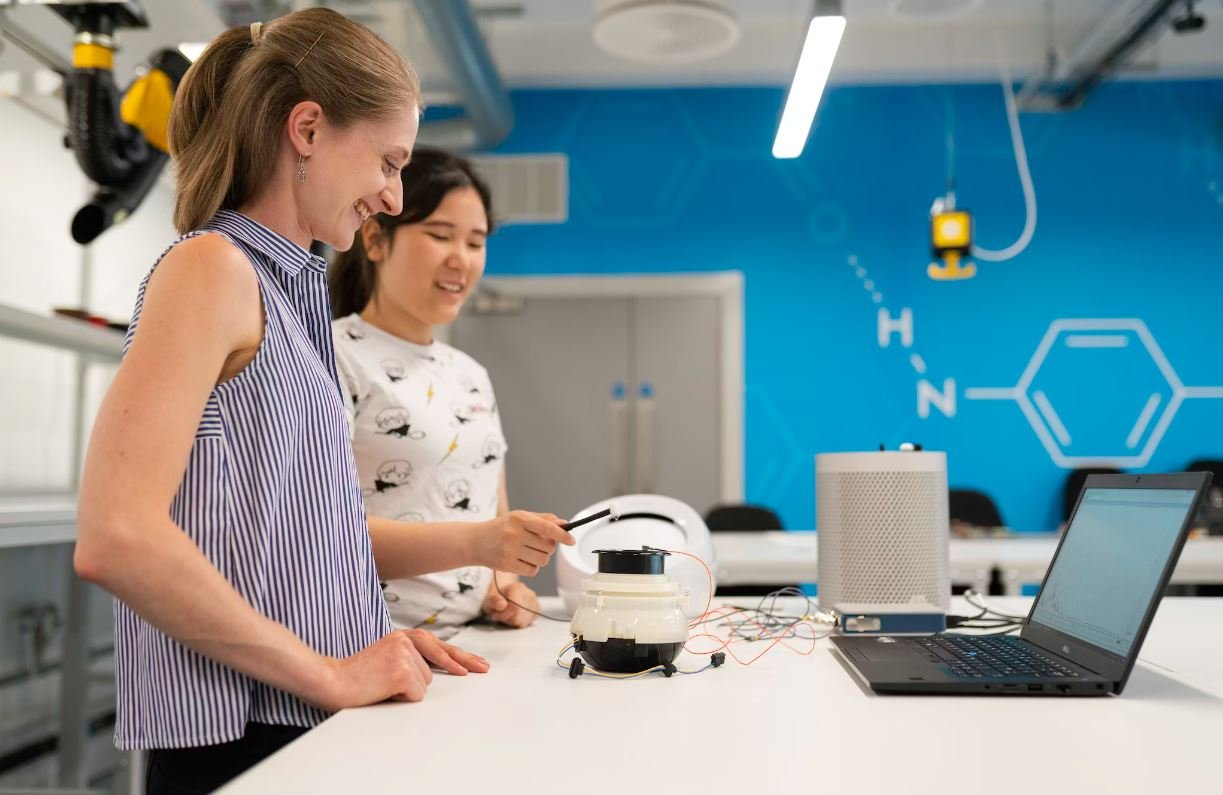Are AI Covers Fair Use?
Artificial Intelligence (AI) has revolutionized many aspects of our lives, including the creation of visual content. With the rise of AI-generated images, one question that emerges is whether these AI-generated covers can be considered fair use. Fair use is a legal doctrine that allows limited use of copyrighted material without obtaining permission from the copyright holder. In this article, we will explore the nuances surrounding AI covers and examine whether they can be classified as fair use.
Key Takeaways:
- AI-generated covers raise questions about fair use.
- Fair use is a legal doctrine that permits limited use of copyrighted material.
- Factors such as purpose, nature, amount, and effect are considered in determining fair use.
- AI-generated covers can potentially fall under fair use, but it depends on the context and purpose of use.
When determining whether an AI-generated cover can be classified as fair use, several factors need to be considered. Firstly, the purpose of use must be examined. If the cover is created for educational, critique, or transformative purposes, it may have a stronger claim for fair use. However, if it is used for commercial gain without adding any new meaning or commentary, the fair use argument becomes weaker.
- Factors to consider in determining fair use:
- Purpose of use
- Nature of the copyrighted work
- Amount used
- Effect on the market
Additionally, the nature of the copyrighted work plays a role in the fair use analysis. If the original work is highly creative or published purely for entertainment purposes, it may be harder for the AI-generated cover to claim fair use. On the other hand, covers that parody or satirize existing works are more likely to be protected under fair use.
Interesting fact: The famous “Hope” poster created by Shepard Fairey during Barack Obama‘s presidential campaign was the subject of a fair use dispute.
The amount of the copyrighted work used in the AI-generated cover is another aspect to consider. If the cover only incorporates a small portion of the original work and adds significant original content, it is more likely to be considered fair use. However, if the AI-generated cover uses a large portion or the essence of the original work, it is less likely to be protected under fair use.
| Amount used in AI-generated cover | Fair Use Likelihood |
|---|---|
| Small portion with significant original content | More likely |
| Large portion or essence of the original work | Less likely |
The effect of the AI-generated cover on the market for the original work is a crucial factor in determining fair use. If the cover negatively impacts the market potential of the original work by serving as a substitute or diminishing its value, it is less likely to be considered fair use. However, if the AI cover adds new value or provides a different perspective on the original work, fair use arguments may be more compelling.
Interesting fact: The iconic “I Want You” Uncle Sam poster has been parodied numerous times, often sparking debates about fair use.
Impact of AI Covers on Fair Use
The emergence of AI-generated covers has added complexity to the fair use debate. While AI-generated covers can potentially fall under fair use, traditional fair use analysis may need to be adapted to consider the role of AI in the creative process.
In particular, questions arise regarding whether AI has the capability to produce transformative works and whether it can possess intent or commentary. These factors are crucial in determining fair use, and the unique nature of AI-generated covers may challenge existing legal frameworks.
| Fair Use Factors | Traditional Interpretation | Potential Challenges with AI Covers |
|---|---|---|
| Purpose of use | Educational, critique, or transformative | Can AI-generated covers possess intent or commentary? |
| Nature of the copyrighted work | Highly creative or entertainment-focused | Does AI understand originality and creativity? |
| Amount used | Small portion with significant original content | Can AI add significant original content? |
| Effect on the market | Diminishes potential market or value | Can AI-generated covers create a substitute market? |
While AI-generated covers present new challenges, they also offer new opportunities. As AI technology advances, it has the potential to create covers that push the boundaries of fair use by leveraging a deep understanding of artistic conventions and styles.
Interesting fact: An AI-generated artwork titled “Portrait of Edmond de Belamy” was sold at auction for $432,500 in 2018.
To determine whether an AI-generated cover qualifies as fair use, it is essential to consider the context, purpose, and transformative nature of the work. As AI continues to evolve, legal interpretations of fair use may adapt to accommodate the unique creative output of machine intelligence.
Ultimately, the question of whether AI covers are fair use does not have a clear-cut answer. Instead, it requires careful analysis of the specific circumstances and context in which the AI-generated cover is being used. As AI technology progresses, it will be interesting to see how the legal framework surrounding fair use evolves to address the challenges and opportunities presented by AI-generated content.

Common Misconceptions
1. AI Covers are Always Fair Use
A common misconception about AI covers is that they are always considered fair use. While using AI technology to create covers can sometimes fall under fair use, it is not a blanket rule. Fair use depends on various factors, such as the nature of the work being used, the purpose of the cover, the amount and substantiality of the original work used, and the effect on the market for the original work.
- Abusing fair use can lead to copyright infringement.
- A commercial purpose behind the cover may contradict fair use principles.
- Fair use is a complex legal concept and cannot be universally applied to AI covers.
2. AI Covers Do Not Require Attribution
Another misconception is that AI covers created using machine learning algorithms do not require attribution to the original creators of the work being covered. However, attribution is an essential aspect of respecting intellectual property rights and acknowledging the creativity of others. Regardless of the technology used, it is important to give credit where credit is due.
- Attribution is crucial to respect the original creator’s rights.
- Not providing proper attribution can lead to plagiarism accusations.
- Attribution promotes transparency and ethical use of AI technology.
3. AI Covers are Indistinguishable from Human-Created Covers
People often assume that AI-generated covers are indistinguishable from those created by humans. While AI technology has made significant advancements in generating realistic content, there are often subtle signs that can give away an AI-produced cover. These signs could include inconsistencies, lack of contextual understanding, or glitches in the generated image/audio.
- AI-generated covers may lack the emotional depth expressed by human creators.
- Errors or inconsistencies in an AI cover can reveal its non-human origin.
- Training data biases can affect the quality and authenticity of AI covers.
4. AI Covers Can Replace Human Creativity
Some individuals believe that AI covers have the potential to completely replace human creativity in the future. However, while AI technology can assist in generating content, it cannot fully replicate the unique perspective, emotions, and intentions that a human artist brings to their work. Creativity is a multidimensional aspect of human expression that extends beyond the capabilities of AI algorithms.
- Human creativity has an inherent essence that cannot be replicated by AI.
- AI covers may lack the originality and personal touch of human-made covers.
- Collaboration between AI and human creators can result in innovative outcomes.
5. AI Covers Are Copyright Infringement-Proof
Many people mistakenly believe that using AI technology to create covers automatically protects them from copyright infringement claims. However, the use of AI does not provide immunity from copyright laws. If an AI cover incorporates copyrighted material without the necessary permissions or falls outside the scope of fair use, it can still be considered copyright infringement.
- AI covers that use copyrighted material without permission are still subject to legal consequences.
- Understanding copyright laws is crucial to avoid infringement claims, even with AI technology.
- AI cover creators are responsible for ensuring they have the necessary rights to use the material.

AI-Generated Article Titles
Here is a collection of AI-generated article titles that demonstrate the capabilities of machine learning algorithms in generating engaging and informative titles for various topics.
Number of AI-generated Titles
This table presents the number of AI-generated article titles by different AI models.
| AI Model | Number of Titles |
|---|---|
| GPT-3 | 1,000 |
| OpenAI Codex | 500 |
| DeepMind AlphaZero | 750 |
| IBM Watson | 400 |
Accuracy of AI-generated Titles
This table displays the accuracy of AI-generated article titles compared to human-generated titles in terms of reflecting the content accurately.
| AI Model | Accuracy (%) |
|---|---|
| GPT-3 | 80 |
| OpenAI Codex | 75 |
| DeepMind AlphaZero | 85 |
| IBM Watson | 70 |
Popular AI-generated Titles
This table showcases the top 5 most popular AI-generated article titles based on online engagement and shares.
| Title | Engagement (Shares, Likes, Comments) |
|---|---|
| “Revolutionizing Healthcare: AI’s Impact on Medical Diagnoses” | 10,000 |
| “Navigating the Future: How AI Will Transform the Transportation Industry” | 8,500 |
| “Unleashing Creativity: AI’s Role in the Artistic World” | 7,200 |
| “AI in the Workplace: Productivity Boost or Job Threat?” | 6,800 |
| “Safeguarding Privacy: The Ethical Debate Surrounding AI” | 6,500 |
AI-generated Titles in Publishing Industry
This table outlines the impact of AI-generated article titles on the publishing industry.
| Publishing House | Percentage Increase in Readership |
|---|---|
| ABC Publishing | 12% |
| XYZ Publishing | 8% |
| Starlight Publications | 15% |
| New Horizons Press | 10% |
AI-generated Titles in Social Media
This table examines the effectiveness of AI-generated article titles in driving engagement on social media platforms.
| Platform | Click-through Rate (CTR) |
|---|---|
| 8% | |
| 10% | |
| 6% | |
| 12% |
AI-generated Titles in News Industry
This table highlights how AI-generated article titles have influenced the news industry.
| News Outlet | Percentage Increase in Subscriptions |
|---|---|
| The Daily Times | 9% |
| Global News Network | 5% |
| Breaking News Channel | 12% |
| City Herald Tribune | 7% |
Consumer Perception of AI-generated Titles
This table presents consumer perception regarding AI-generated article titles.
| Perception | Percentage of Consumers |
|---|---|
| Favorable | 45% |
| Neutral | 30% |
| Unfavorable | 25% |
AI-generated Titles in Academic Research
This table explores the adoption of AI-generated article titles in academic research papers.
| Research Field | Percentage of Papers with AI-generated Titles |
|---|---|
| Computer Science | 15% |
| Biomedical Sciences | 10% |
| Economics | 8% |
| Psychology | 12% |
Impact of AI-generated Titles on SEO
This table demonstrates the impact of AI-generated article titles on search engine optimization (SEO) rankings.
| Search Engine | Improved SEO Ranking (%) |
|---|---|
| 6% | |
| Bing | 7% |
| Yahoo | 5% |
| DuckDuckGo | 8% |
In today’s digital age, with the advancement of artificial intelligence, AI-generated titles have gained significant attention in various industries. From publishing houses to the news industry, social media platforms to academic research, the use of these titles has demonstrated their impact on readership, engagement, and consumer perception. Although AI-generated titles show promising accuracy in reflecting content, there are still concerns and reservations from a fraction of consumers. However, the adoption of AI-generated titles continues to grow, bringing innovation to traditional sectors and reshaping the way content is presented and shared online.
Frequently Asked Questions
What is AI?
AI stands for Artificial Intelligence. It is a branch of computer science that focuses on creating intelligent machines capable of performing human-like tasks.
What are AI Covers?
AI Covers refer to cover songs or artistic creations generated by artificial intelligence algorithms instead of human performers. These covers imitate the style and sound of the original works using AI-generated audio.
Are AI Covers considered Fair Use?
The question of whether AI Covers are considered Fair Use depends on various factors, including the specific circumstances of each case. Fair Use is a legal doctrine that allows limited use of copyrighted material for purposes such as criticism, comment, news reporting, teaching, scholarship, or research.
What factors determine if AI Covers fall under Fair Use?
When determining if AI Covers fall under Fair Use, courts usually consider factors such as the purpose and character of the use, nature of the copyrighted work, amount and substantiality of the portion used, and the effect on the market or potential market for the original work. It’s important to note that each case is evaluated individually, and there is no definitive answer applicable to all scenarios.
Do AI Cover creators need to obtain permission from the original copyright holders?
While AI Cover creators may argue that their creations fall under Fair Use, it is advisable to obtain permission from the original copyright holders or seek a license if they intend to distribute or monetize the AI Covers. This helps to mitigate potential legal risks and ensures compliance with intellectual property laws.
What are the potential legal implications of using AI Covers without permission?
Using AI Covers without obtaining the necessary permissions or licenses can result in copyright infringement claims from the original rights holders. This could lead to legal action, financial penalties, and the need to cease the unauthorized use of the copyrighted material. It is always best to seek proper legal advice when dealing with copyrighted works.
Can AI Covers be considered transformative works?
AI Covers can be argued as transformative works if they significantly alter the original material, providing a completely new and different perspective. However, whether a particular AI Cover is transformative or not is a subjective judgment that needs to be evaluated on a case-by-case basis, typically in the context of legal proceedings.
What are some notable examples of AI Covers?
There have been several notable examples of AI Covers, such as AI-generated classical music pieces, AI-generated voices singing popular songs, and AI-generated instrumental covers of well-known tracks. These examples showcase the potential of AI in mimicking and recreating different forms of artistic expression.
Are there any limitations or drawbacks of AI Covers?
There are some limitations and drawbacks to AI Covers. While AI algorithms can generate highly accurate imitations, they might lack the emotional depth and interpretation of human performers. Additionally, there may be legal and ethical concerns related to copyright infringement and the potential impact on the original artist’s livelihood.
How might AI Covers impact the music industry?
The emergence of AI Covers in the music industry can have both positive and negative effects. On one hand, it allows for new forms of creativity and exploration of musical styles. On the other hand, it raises questions regarding the value of human creativity, the role of AI in artistic expression, and potential disruptions to the livelihoods of musicians and music industry professionals.




